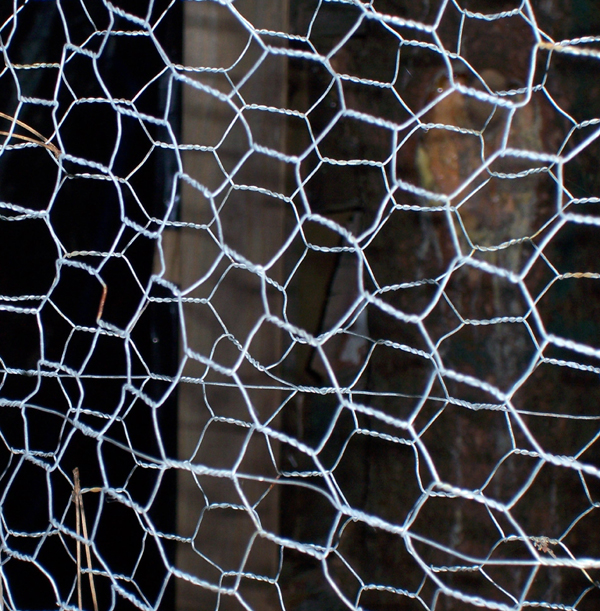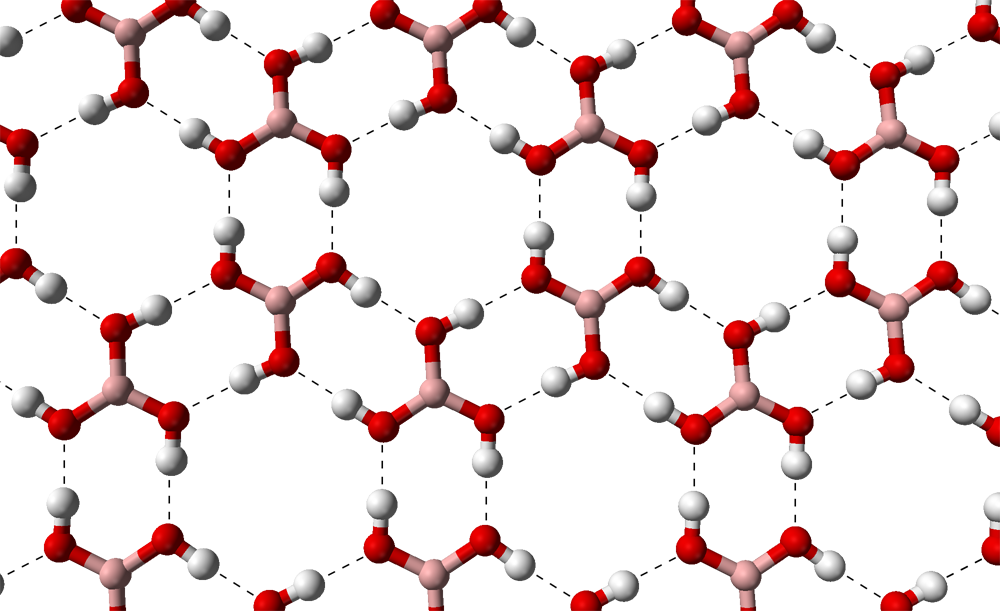Chicken wire (chemistry) on:
[Wikipedia]
[Google]
[Amazon]
 In chemistry the term chicken wire is used in different contexts. Most of them relate to the similarity of the regular
In chemistry the term chicken wire is used in different contexts. Most of them relate to the similarity of the regular
 * Non-
* Non-
cartoon
by Nick D. Kim
 In chemistry the term chicken wire is used in different contexts. Most of them relate to the similarity of the regular
In chemistry the term chicken wire is used in different contexts. Most of them relate to the similarity of the regular hexagonal
In geometry, a hexagon (from Greek , , meaning "six", and , , meaning "corner, angle") is a six-sided polygon. The total of the internal angles of any simple (non-self-intersecting) hexagon is 720°.
Regular hexagon
A '' regular hexagon'' has ...
(honeycomb
A honeycomb is a mass of hexagonal prismatic wax cells built by honey bees in their nests to contain their larvae and stores of honey and pollen.
Beekeepers may remove the entire honeycomb to harvest honey. Honey bees consume about of honey ...
-like) patterns found in certain chemical compounds
A chemical compound is a chemical substance composed of many identical molecules (or molecular entities) containing atoms from more than one chemical element held together by chemical bonds. A molecule consisting of atoms of only one element ...
to the mesh
A mesh is a barrier made of connected strands of metal, fiber, or other flexible or ductile materials. A mesh is similar to a web or a net in that it has many attached or woven strands.
Types
* A plastic mesh may be extruded, oriented, exp ...
structure commonly seen in real chicken wire
Chicken wire, or poultry netting, is a mesh of wire commonly used to fence in fowl, such as chickens, in a run or coop. It is made of thin, flexible, galvanized steel wire with hexagonal gaps. Available in 1 inch (about 2.5 cm) diameter, ...
.
Examples
Polycyclic aromatic hydrocarbons
Polycyclic aromatic hydrocarbon
A polycyclic aromatic hydrocarbon (PAH) is a class of organic compounds that is composed of multiple aromatic rings. The simplest representative is naphthalene, having two aromatic rings and the three-ring compounds anthracene and phenanthrene. ...
s or graphene
Graphene () is an allotrope of carbon consisting of a single layer of atoms arranged in a hexagonal lattice nanostructure.
s—including fullerene
A fullerene is an allotrope of carbon whose molecule consists of carbon atoms connected by single and double bonds so as to form a closed or partially closed mesh, with fused rings of five to seven atoms. The molecule may be a hollow sphere, ...
s, carbon nanotubes, and graphite
Graphite () is a crystalline form of the element carbon. It consists of stacked layers of graphene. Graphite occurs naturally and is the most stable form of carbon under standard conditions. Synthetic and natural graphite are consumed on lar ...
—have a hexagonal structure that is often described as ''chicken wire-like''.
Hexagonal molecular structures
A hexagonal structure that is often described as ''chicken wire-like'' can also be found in other types of chemical compounds such as: * Non-
* Non-aromatic
In chemistry, aromaticity is a chemical property of cyclic ( ring-shaped), ''typically'' planar (flat) molecular structures with pi bonds in resonance (those containing delocalized electrons) that gives increased stability compared to satur ...
polycyclic hydrocarbon
In organic chemistry, a hydrocarbon is an organic compound consisting entirely of hydrogen and carbon. Hydrocarbons are examples of group 14 hydrides. Hydrocarbons are generally colourless and hydrophobic, and their odors are usually weak or ...
s, e.g. steroids like cholesterol
Cholesterol is any of a class of certain organic molecules called lipids. It is a sterol (or modified steroid), a type of lipid. Cholesterol is biosynthesized by all animal cells and is an essential structural component of animal cell mem ...
* Flat hexagonal hydrogen bonded trimesic acid
Trimesic acid, also known as benzene-1,3,5-tricarboxylic acid, is an organic compound with the formula C6H3(CO2H)3. It is one of three isomers of benzenetricarboxylic acid. A colorless solid, trimesic acid has some commercial value as a precursor ...
(benzene-1,3,5-tricarboxylic acid), boric acid
Boric acid, more specifically orthoboric acid, is a compound of boron, oxygen, and hydrogen with formula . It may also be called hydrogen borate or boracic acid. It is usually encountered as colorless crystals or a white powder, that dissolve ...
, or melamine-cyanuric acid complex
Melamine cyanurate, also known as melamine–cyanuric acid adduct or melamine–cyanuric acid complex, is a crystalline complex formed from a 1:1 mixture of melamine and cyanuric acid. The substance is not a salt despite its non-systematic name '' ...
es
* Interwoven molecule chains in the inorganic polymer NaAuS
* Complexes of the protein
Proteins are large biomolecules and macromolecules that comprise one or more long chains of amino acid residues. Proteins perform a vast array of functions within organisms, including catalysing metabolic reactions, DNA replication, res ...
clathrin
Clathrin is a protein that plays a major role in the formation of coated vesicles. Clathrin was first isolated and named by Barbara Pearse in 1976. It forms a triskelion shape composed of three clathrin heavy chains and three light chains. When ...
Additional information
Bond line notation
Theskeletal formula
The skeletal formula, or line-angle formula or shorthand formula, of an organic compound is a type of molecular structural formula that serves as a shorthand representation of a molecule's bonding and some details of its molecular geometry. A ...
is a method to draw structural formulas of organic compound
In chemistry, organic compounds are generally any chemical compounds that contain carbon-hydrogen or carbon-carbon bonds. Due to carbon's ability to catenate (form chains with other carbon atoms), millions of organic compounds are known. T ...
s where lines represent the chemical bond
A chemical bond is a lasting attraction between atoms or ions that enables the formation of molecules and crystals. The bond may result from the electrostatic force between oppositely charged ions as in ionic bonds, or through the sharing of ...
s and the vertices represent implicit carbon
Carbon () is a chemical element with the symbol C and atomic number 6. It is nonmetallic and tetravalent—its atom making four electrons available to form covalent chemical bonds. It belongs to group 14 of the periodic table. Carbon mak ...
atom
Every atom is composed of a nucleus and one or more electrons bound to the nucleus. The nucleus is made of one or more protons and a number of neutrons. Only the most common variety of hydrogen has no neutrons.
Every solid, liquid, gas, ...
s. This notation is sometimes jestingly called ''chicken wire notation''.
Placeholder for organic compounds
''Chicken wire'' is sometimes used as aplaceholder name
Placeholder names are words that can refer to things or people whose names do not exist, are temporarily forgotten, are not relevant to the salient point at hand, are to avoid stigmatization, are unknowable/unpredictable in the context in wh ...
for any organic compound, similar to the use of the name John Doe
John Doe (male) and Jane Doe (female) are multiple-use placeholder names that are used when the true name of a person is unknown or is being intentionally concealed. In the context of law enforcement in the United States, such names are often ...
.
Chemical joke
It is an old joke in chemistry to draw a polycyclic hexagonal chemical structure and call this fictional compound ''chickenwire''. By adding one or two simplechemical group
In organic chemistry, a functional group is a substituent or moiety in a molecule that causes the molecule's characteristic chemical reactions. The same functional group will undergo the same or similar chemical reactions regardless of the rest ...
s to this skeleton, the compound can then be named following the official chemical naming convention. Examples are:
* 1,2-Dimethyl-chickenwire in cartoon
by Nick D. Kim
Surface plots
In computational chemistry a ''chicken wire model'' or ''chicken wire surface plot'' is a way to visualize molecular models by drawing thepolygon
In geometry, a polygon () is a plane figure that is described by a finite number of straight line segments connected to form a closed ''polygonal chain'' (or ''polygonal circuit''). The bounded plane region, the bounding circuit, or the two to ...
mesh of their surface (defined e.g. as the van der Waals radius
The van der Waals radius, ''r'', of an atom is the radius of an imaginary hard sphere representing the distance of closest approach for another atom.
It is named after Johannes Diderik van der Waals, winner of the 1910 Nobel Prize in Physics, ...
or a certain electron density
In quantum chemistry, electron density or electronic density is the measure of the probability of an electron being present at an infinitesimal element of space surrounding any given point. It is a scalar quantity depending upon three spatial va ...
).
References
{{Reflist, 2 Molecular geometry